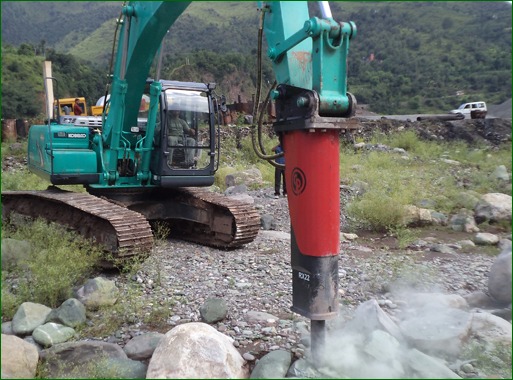Moisture Management
To Rent, or Not to Rent?

Now that the busy season is upon us, contractors nationwide are rolling out their fleets and dusting off their tools and equipment for what hopefully will be another profitable summer. But, if they are like any of the contractors I have spoken to and worked with over the years, there is a burning question on their minds: Do I rent, or do I buy? That is, indeed, the question.
According to the most recent data from the American Rental Association (ARA), the construction equipment rental industry’s forecasted revenue growth for 2012 is expected to increase by more than 6 percent, which is three-times the growth forecasted for US GDP in 2012. The equipment rental industry obviously is playing an important part in the recovering economy, but when does it really make sense for contractors to rent equipment, as opposed to owning it? With the economy now making its way toward recovery, contractors here in the United States have some big decisions to make, and those decisions will have real consequences for their bottom lines.
What are the considerations when making the choice to rent or buy? How are these factors evaluated to get a clear picture, and make the most profitable decision for their business?
Key decision factors
In order to fully understand the decision to rent or own, first consider the cost of ownership of a given piece of equipment. In addition to the initial cash outlay to buy or finance a piece of equipment, cost of ownership also includes general operating costs like maintenance, repairs, inspections, transportation, storage, etc. over time. It also is important to consider factors such as interest, depreciation, taxes, insurance, fuel and energy consumption. Most of these costs increase over time, and can have a significant effect on a contractor’s bottom line if not properly managed.
Another key factor to understand is the rate of utilization. This can be estimated on a monthly basis by looking at the past year’s seasonal contracts, forecasted projects, and potential prospects. In order to determine an expected utilization rate for a particular piece of equipment, take the number of days the equipment will be used in a month-long period, and divide it among the average amount of working days in a month, which is 22. This will give a contractor an approximate utilization rate percentage.
It stands to reason that numbers anywhere in and around 50 percent could potentially present an investment risk, as the profits made through utilizing the equipment may or may not outweigh the cost of ownership (depreciation, maintenance, insurance, etc.). So, a piece of equipment with a projected utilization rate well above that would likely be most profitable if owned, and any piece of equipment well below that midpoint, would likely be most profitable to rent.
Benefits of renting
There are many benefits to renting for contractors in this economy, as rental is a relatively flexible and risk-free option for contractors who are either unwilling or unable to handle the large cash outlay that ownership often requires. Also, rental houses tend to keep entire fleets of relatively brand new equipment that is immediately available to contractors, and renting eliminates maintenance, storage, and most other operating costs, outside of fuel.
Rental also offers access to a variety of equipment without tying up a contractor’s investment capital, and a fixed rental cost can be easily factored into future bids. Renting also can increase a contractor’s borrowing power. Since rented equipment is not listed as a liability on a balance sheet, it can improve one’s ratio of assets to liabilities.
Benefits of ownership
Buying or financing certain pieces of equipment makes the most sense for a contractor if the equipment in question is essential to one’s core business and is expected to have a high utilization rate for a long-term period. Take, for instance, a Chicago Pneumatic model CP1240 90-pound class breaker. Contractors who have forecasted for high utilization rates would benefit from owning such a piece of equipment. In this instance, the return on investment can begin within a few months of the initial purchase. Investing in certain types of equipment with high projected utilization rates (above 60 percent to 70 percent) will likely offset any initial outlay of funds from buying or financing, and can even provide long-term tax benefits for businesses through the deduction of interest expense and depreciation costs on your tax forms.
The right decision for your business
When making the decision to either rent or own equipment, it is important for contractors to consider the long-term effects of an equipment purchase on their company’s balance sheet. Does the projected utilization rate justify the total cost of ownership? If so, then ownership can be the right way to go. But if the total cost of ownership for a piece of equipment is high, and the expected utilization and subsequent profits from said equipment are projected to be low, then renting is likely the best option.
| KWIK LINTELS as a Rental Business |
| KWIK LINTEL is a temporary support and removable metal beam used when laying concrete masonry blocks over any opening. The lintel enables block layers to simply place the lintel over the top of any opening, and continue setting blocks without any delays or interruptions. The lintel eliminates the need for wood framing and all related costs.?? Once the cement has cured, the patented, retractable tab simply slides back. The lintel will easily drop out, leaving a clean, finished opening. Professionally engineered in Australia, each lintel exceeds all U.S. building standards.
The KWIK LINTELS you own can be rented for as little as $2 a day. For more information, visit www.kwiklintel.com. |
Eudes Defoeis product manager, handheld tools and light compaction, Chicago Pneumatic Construction Equipment.